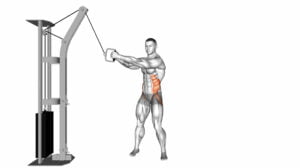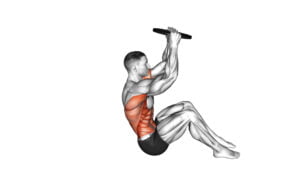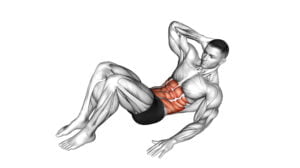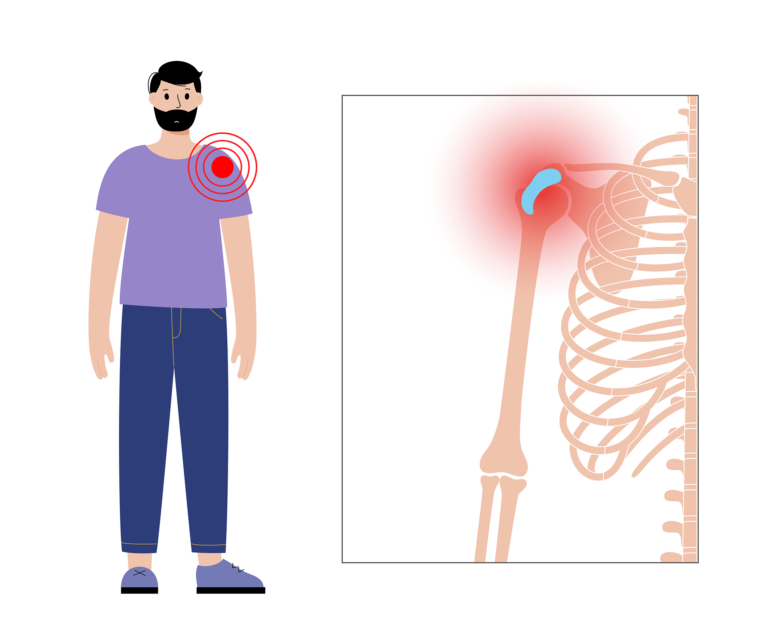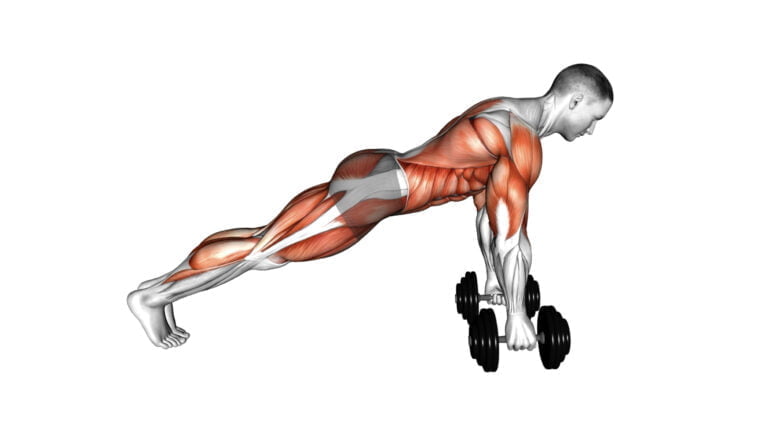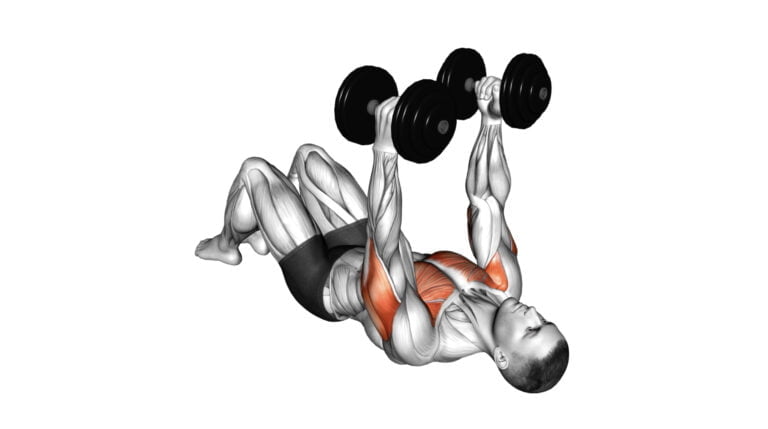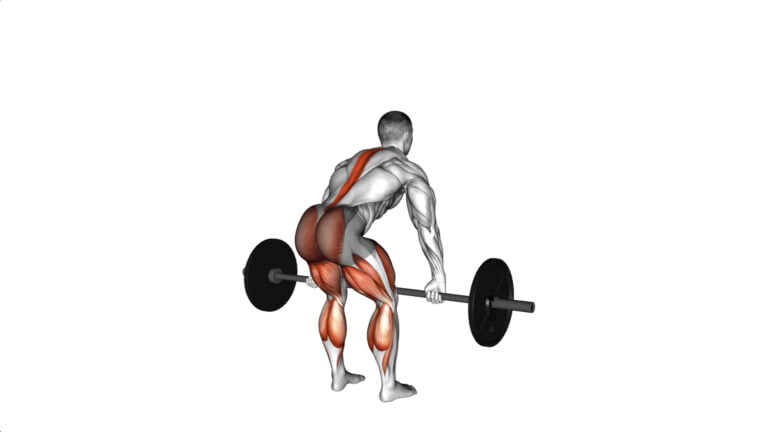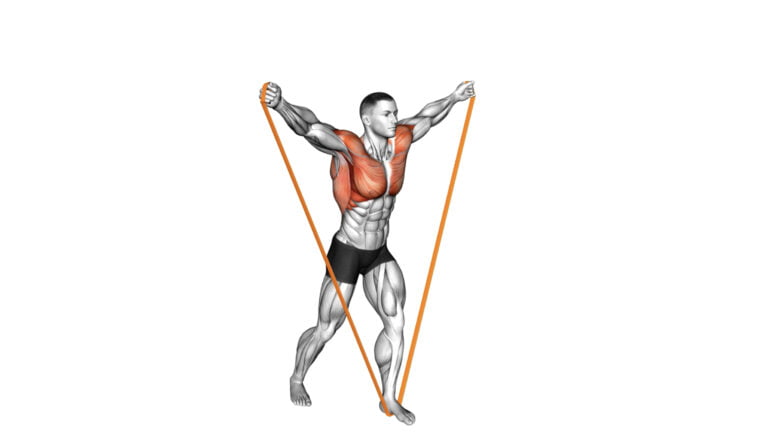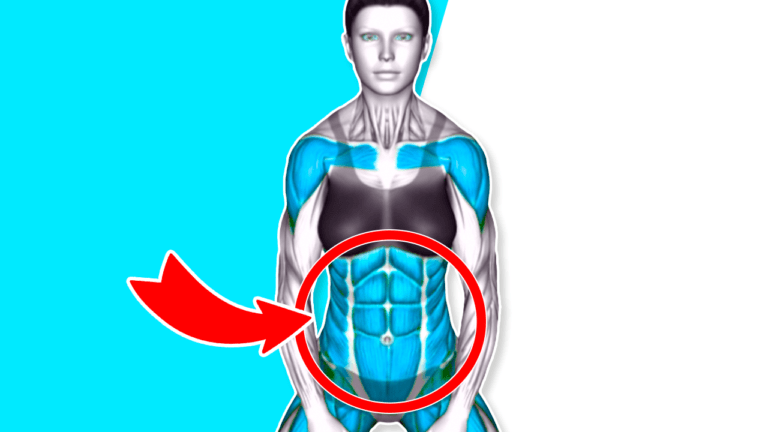10 Effective Dumbbell Core Exercises For A Stronger Midsection

Watch 10 best dumbbell core exercises Video
Unlocking the secrets to a sculpted midsection often leads us down a path of endless crunches and sit-ups, but what if I told you there was a more dynamic way to achieve those coveted core gains? With over a decade of experience in personal training and sports science, I’ve honed my expertise to craft workouts that yield results.
Dumbbell exercises have been a game-changer for my clients, targeting the core with precision while also engaging multiple muscle groups for full-body benefits.
This blog post unravels ten powerhouse dumbbell maneuvers guaranteed to fortify your core—moves that work beyond surface muscles, digging into the depths of your strength. Each detailed step is like having your own personal trainer guiding you through every twist and lift.
And the best part? These exercises call for nothing more than a single dumbbell and some floor space, making them an ideal addition to any fitness routine. Challenge awaits; let’s reveal stronger abs together!
Key Takeaways
- Dumbbell core exercises can target and strengthen your midsection, enhance balance, and prevent back pain when integrated into a regular fitness routine.
- It’s essential to select the proper dumbbell weight, warm up muscles before workouts, and maintain correct form during exercises for safety and effectiveness.
- A balanced workout plan should include these core exercises 2 – 3 times weekly with gradual increases in weight or reps for continuous muscle development.
- Core workouts are not just about achieving toned abdominals; they improve stability for daily activities and athletic performance by strengthening the entire core region.
- To advance your core strength further, increase dumbbell weights carefully over time, add challenging variations to exercises, and regularly change your workout routine.
The Importance of a Strong Core

A strong core is much more than just having washboard abs; it’s the powerhouse that supports your entire body. Engaging your abdominal muscles, such as the rectus abdominis and transverse abdominis, during workouts does more than create a toned belly; it ensures all movements are stable and powerful.
Core strength plays a pivotal role not only in exercises but in everyday activities too. The control and balance provided by a well-conditioned midsection can protect you from falls and prevent lower back pain.
Every motion starts with the core, whether you’re lifting weights or simply bending over to tie your shoelaces. Muscles like internal obliques and external obliques must contract together to stabilize the spine and pelvis under loads or when faced with sudden movements, preventing undue strain on other parts of your body.
This coordination is critical for athletes who perform twists and punches as part of their sport but also benefits those involved in regular fitness routines by enhancing stability for unilateral exercises such as lunges or single-arm snatches.
Next up: Preparing for Your Dumbbell Core Workout—get ready to learn how to choose the right equipment and properly warm-up before diving into your routine!
Preparing for Your Dumbbell Core Workout

Before diving into your dumbbell core workout, it’s important to choose the right dumbbells and warm up your muscles. Choosing the appropriate weight will ensure that you’re able to perform each exercise with proper form, while a thorough warm-up will help prevent injury and prepare your body for the upcoming exercises.
Choosing the Right Dumbbells
Selecting the appropriate dumbbells for your core workout is crucial for maximizing effectiveness and preventing injury. Consider starting with a medium-weight set, typically around 10 to 15 pounds; these weights are versatile enough to challenge your abdomen, oblique muscles, and even upper body during various exercises.
Adjust the weight according to your comfort level and strength, ensuring you can perform movements with proper form while still feeling resistance.
Keep in mind that every exercise requires different muscle groups, so what works well for a Dumbbell Wood Chop Squat might feel different when doing a Dumbbell Starfish Crunch. Always listen to your body—as you grow stronger through consistent core workouts using these exercises, it may be time to gradually increase the weight of the dumbbells you use to maintain progress and continue building muscle mass.
Warming Up Your Muscles
Before diving into your dumbbell core workout, it’s essential to warm up your muscles properly. A good warm-up increases blood flow, primes your body for movement, and can help prevent injuries.
Start with dynamic stretches that mimic the exercises you’ll be performing – like arm circles or torso twists. These movements get the heart pumping and prepare your joints for the workload ahead.
Incorporate moves such as high knees or jumping jacks to elevate your heart rate and activate key muscle groups around the core, hips, and shoulders. Not only does this prep your body for more intense activity, but it also sets a foundation for stability and balance which are vital when handling weights during exercises like Russian twists or standing weighted twists.
Plus, watching a video of these exercises before starting can provide visual cues to ensure proper technique throughout your routine.
10 Effective Dumbbell Core Exercises
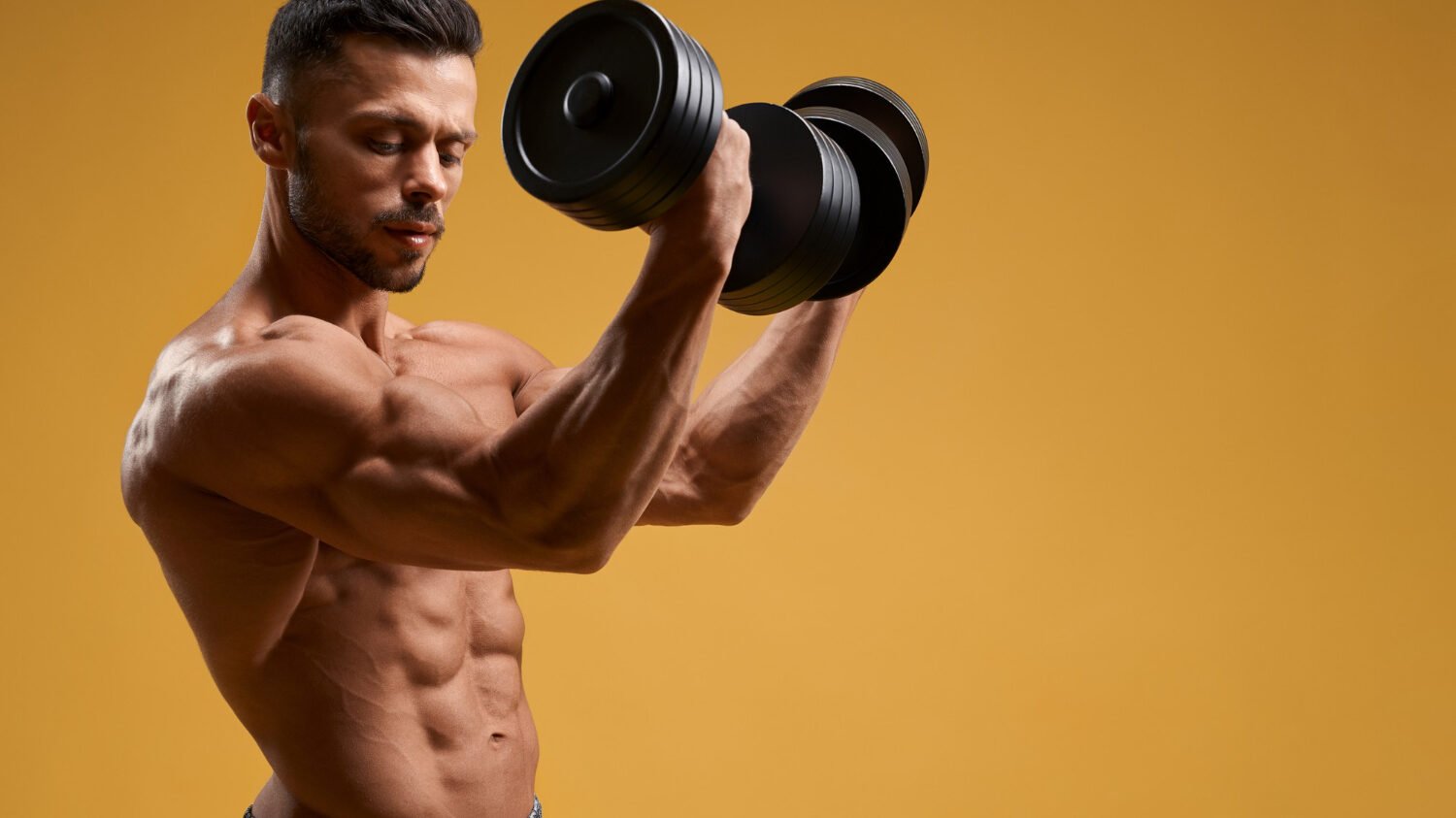
Get ready to strengthen your midsection with these 10 effective dumbbell core exercises. From wood chop squats to starfish crunches, these exercises will help you build a stronger and more stable core.
For a detailed guide on how to perform each exercise safely and effectively, keep reading! And don’t forget to check out the video demonstration of these exercises for visual guidance.
1. Dumbbell Wood Chop Squat
Dumbbell Wood Chop Squat is a dynamic exercise that works your core, shoulders, and legs all at once. Grab a medium-weight dumbbell with both hands and stand with your feet shoulder-width apart.
Swing the weight diagonally across your body starting near one hip, rising upwards as if you’re drawing an imaginary diagonal line while simultaneously lowering into a squat position.
As you power back up to the starting stance, use your leg strength and core muscles for momentum. This compound movement not only burns calories but also enhances coordination between your upper and lower body.
Perform 8-12 reps before taking a break; then aim for 2 or 3 total rounds to effectively challenge your abs muscle group and lower body.
For visual guidance and technique tips, check out the video tutorial included in this article. It shows step-by-step instructions ensuring you maintain proper form throughout each rep of the wood chop squat.
Watch carefully to learn how to engage both movement and anti-movement elements successfully for optimal core stability during this powerful workout segment.
2. Dumbbell Spell Caster
Use a medium-weight dumbbell for this exercise, typically between 10 to 15 pounds. Stand with your feet shoulder-width apart and hold the dumbbell in both hands at chest level. Engage your core and twist your torso to one side, extending the dumbbell outwards from your body.
Return to the starting position and repeat on the other side. This exercise targets multiple muscle groups in the core, including the obliques, rectus abdominis, and transverse abdominis.
The Dumbbell Spell Caster effectively strengthens rotational movements of the core while engaging stabilizing muscles throughout its range of motion. Focus on maintaining proper form and controlled movement throughout each repetition to maximize its benefits for core stability and strength development.
3. Dumbbell Twist with Legs Floor Off
Transitioning from the dynamic movements of the Dumbbell Spell Caster, we move into the challenging exercise of the Dumbbell Twist with Legs Floor Off. This exercise targets rotational core strength and stability, engaging the obliques and deep core muscles.
For this exercise, lie on your back with your legs extended upward and off the floor. Hold a dumbbell with both hands at chest level. Keeping your legs straight, rotate your torso to one side while lowering the dumbbell toward the floor next to you.
Return to center and then rotate to the other side in a controlled manner. Focus on maintaining stability through your hips and keeping tension in your abdominals throughout each twist.
4. Dumbbell Straight Arm Crunch
Transitioning from the Dumbbell Twist with Legs Floor Off, the Dumbbell Straight Arm Crunch is a fundamental exercise for strengthening both your core and arms. To perform this move, lie on your back with your legs bent and feet flat on the floor.
Hold a medium-weight dumbbell straight above your chest with extended arms. With control, engage your abdominal muscles to lift your head and shoulders off the ground while reaching towards the ceiling with the dumbbell.
This exercise effectively targets various core muscles such as the rectus abdominis and obliques, providing stability and reducing injury risks in everyday activities. Ensure proper breathing technique during each repetition and maintain a slow, controlled pace to maximize engagement of your core muscles.
5. Dumbbell Straight Arm Twisting Sit-up
Transitioning to the next core exercise, the dumbbell straight arm twisting sit-up is an effective move for strengthening both the arms and abdominal muscles. By incorporating this exercise into your routine, you can achieve a more well-rounded level of strength in your midsection.
This dynamic exercise engages multiple muscle groups in the core area, including the rectus abdominis, diaphragm, and transverse abdominis. The twisting motion adds an element of challenge to help enhance overall core stability and strength.
To perform this exercise, lie on your back with a medium-weight dumbbell held straight over your chest. As you sit up, twist your torso to one side while keeping the dumbbell extended forward.
6. Dumbbell Straight Leg Twist
The dumbbell straight leg twist engages the core, arms, and stabilizing muscles to enhance overall strength. This exercise targets the obliques and lower abs while also challenging arm muscles.
Performing 8-12 reps of the dumbbell straight leg twist with a single dumbbell helps build balanced strength in the core and arms. This workout aids in reducing the risk of injury by stabilizing the spine and pelvis, making it an essential addition to any core training routine.
The article includes detailed instructions and demonstrations for performing this exercise safely and effectively. The engaging content provides specific muscle engagement information, making it suitable for individuals looking to develop their core strength using just one piece of equipment – a single dumbbell.
7. Dumbbell Starfish Crunch
To perform the dumbbell starfish crunch, lie on your back with legs and arms extended. Hold a dumbbell in one hand, lift your shoulder blades off the floor, and touch the opposite foot with the dumbbell.
This exercise targets your obliques and improves core strength.
Engage your abs as you reach for each foot, exhaling on exertion. Maintain control throughout the movement to maximize effectiveness. With consistent practice, this exercise can help build stability and power in your midsection while promoting overall core development and improved functional strength.
8. Dumbbell Side Plank with Rear Fly
Engage your core and shoulder muscles with the dumbbell side plank combined with rear fly. Set yourself in a side plank position while holding a dumbbell in your top hand, then perform a controlled rear fly movement with your arm, targeting the muscles on each side of your body.
This exercise not only strengthens your core but also improves stability and reduces the risk of injury during daily activities or athletic performance.
Maintain proper form throughout to ensure effectiveness and maximize results. The detailed instructions provided will guide you through executing this challenging yet rewarding exercise.
9. Dumbbell Crunch Hold with Legs Off
Transitioning from the Dumbbell Side Plank with Rear Fly, we move on to another effective exercise – the Dumbbell Crunch Hold with Legs Off. This exercise engages both the arms and core for balanced strength.
To perform this exercise, lie on your back and hold a medium-weight dumbbell (usually between 10 to 15 pounds) straight up over your chest. Lift your legs off the ground while keeping them together and extended.
Then, lift your upper body off the mat to crunch while simultaneously raising your legs toward the dumbbell. This movement targets multiple muscle groups in the core area, including rectus abdominis, diaphragm, transverse abdominis, pelvic floor muscles, and obliques.
10. Dumbbell V-up
The dumbbell V-up is an effective core exercise that engages the abdominal muscles to promote strength and stability. Using a medium-weight dumbbell, this exercise targets both the movement and anti-movement aspects of core strengthening, providing a comprehensive workout for the midsection.
Incorporating 8-12 reps of the dumbbell V-up into your routine can help develop overall core strength. What’s more, this exercise offers added convenience as it can be performed using just a single dumbbell.
For those who prefer visual guidance, a step-by-step guide to performing the dumbbell V-up will be available in the accompanying video, ensuring clear instruction on proper form and technique.
This demonstration will further enhance understanding and execution of this highly beneficial core exercise.
How to Perform the Exercises Safely
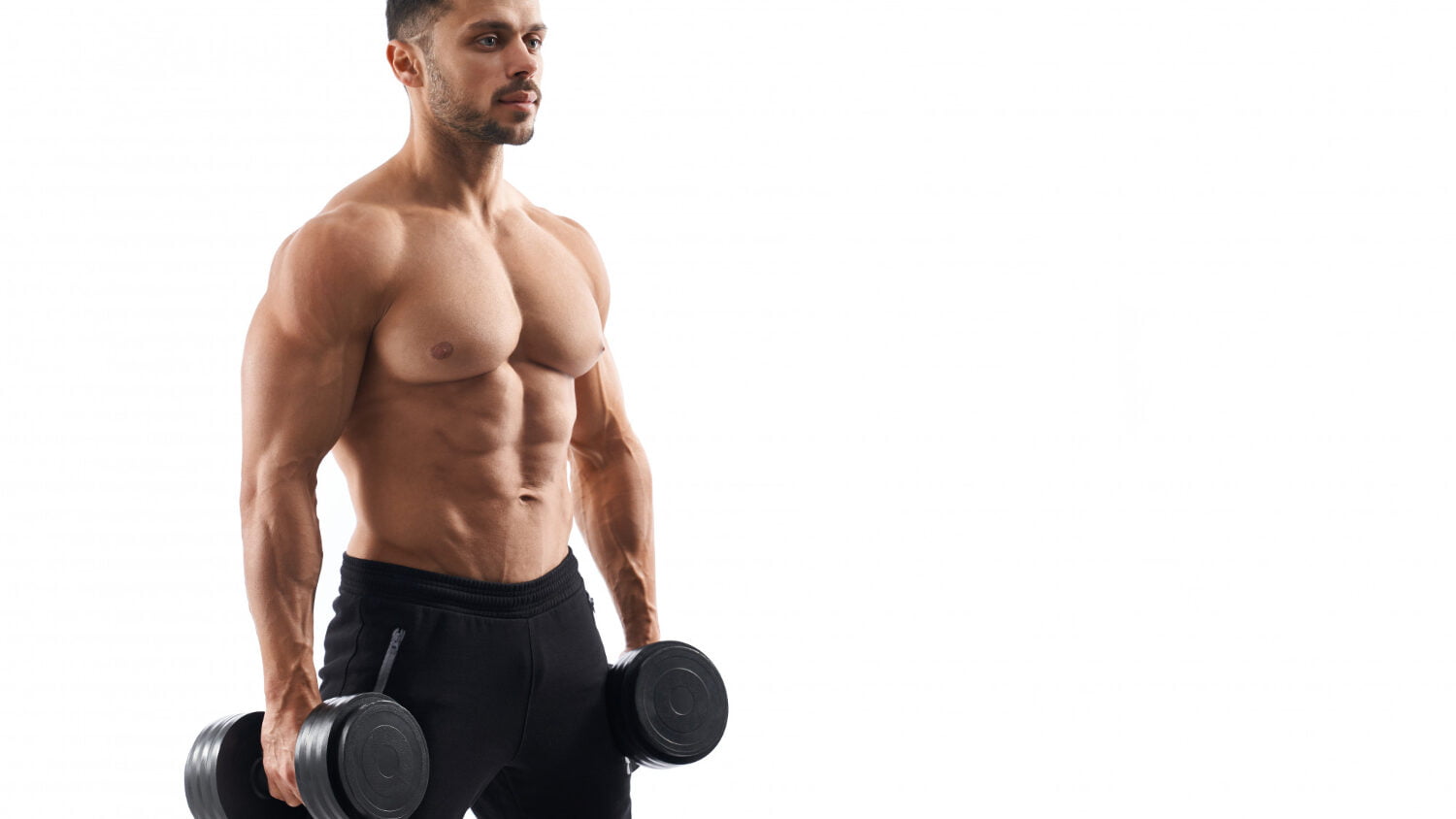
Ensure proper form and technique when performing the dumbbell core exercises to prevent injury and maximize effectiveness. Focus on engaging your core muscles, breathing properly, and maintaining control throughout each movement.
If you want to see how these exercises are performed, check out the video demonstration for a visual guide.
Proper Form and Technique
Maintain proper form and technique throughout each dumbbell core exercise to effectively engage your muscles and prevent injury. Keep your spine neutral, shoulders relaxed, and core tight during the movements for optimal results.
It’s crucial to execute controlled, deliberate motions while focusing on breathing steadily to support intra-abdominal pressure.
Engage the targeted muscle groups by fully extending or contracting as recommended for each exercise. Pay attention to positioning your body correctly, such as maintaining a stable stance with flexed elbows or a steady standing position to maximize the effectiveness of the workout.
Breathing and Core Engagement
Transitioning from proper form and technique, mastering the art of breathing and core engagement is fundamental in reaping the full benefits of dumbbell core exercises. Consistent deep breathing not only enhances oxygen flow to your muscles but also helps stabilize your torso and maintain balance during each movement.
Engage your core by contracting those abdominal muscles throughout every exercise, which will protect your spine, improve stability, and increase the effectiveness of each repetition.
Whether it’s a twisting sit-up or a crunch hold with legs off, maintaining consistent breath control combined with strong core engagement will ensure optimal performance and results.
Integrating Dumbbell Core Exercises into Your Routine

To effectively integrate dumbbell core exercises into your routine, it’s important to create a balanced workout plan that targets all areas of your core. This includes incorporating these exercises at the right frequency and repetitions to maximize their benefits and gradually increasing weight and adding variations for continuous progress.
For more tips on how to integrate these exercises into your routine, keep reading for the full blog post.
Creating a Balanced Workout Plan
A balanced workout plan should encompass a combination of strength training, cardiovascular exercises, flexibility routines, and work on balance. This variety helps prevent monotony and challenges the body in diverse ways.
It is advisable to include 8-12 reps of each exercise in the routine, with the first three movements being unilateral and targeting 8-12 reps per side. When integrating dumbbell core exercises into your fitness program, start with light weights and gradually progress over time for effective results.
A rest period of 1 to 2 minutes between rounds is recommended to optimize performance while reducing fatigue.
Frequency and Repetitions
Perform these dumbbell core exercises 4-6 times each week, distributed over 2-3 sessions. Aim for 10-15 repetitions to maintain endurance and avoid excessive fatigue. It’s essential to progressively increase the weight you use or add more reps as your strength improves to ensure continued development of your core muscles.
For videos demonstrating proper form and technique for each exercise, check out our online resources that provide visual guidance on executing these movements safely and effectively.
Advancing Your Core Workout
Once you have mastered the basic dumbbell core exercises, it’s time to advance your workout. This can include increasing weight gradually, adding variations and challenges to keep challenging your core muscles.
And that’s not all – check out our video for a demonstration of these exercises in action!
Increasing Weight Gradually
To progress in your core strength training, it’s essential to gradually increase the weight of your dumbbells. By challenging your muscles with slightly heavier weights over time, you can effectively build more strength and functional stability in your core.
This gradual progression not only helps to enhance muscle endurance but also reduces the risk of plateauing in your fitness journey. As a general guideline, consider adding 2-5 pounds to each dumbbell every few weeks as you feel confident with the current weight.
Incorporating a progressive approach to increasing weight will promote continuous adaptation within your muscles, leading to improved overall core strength and performance. With this methodical rise in resistance, you can steadily advance through various levels of intensity while maintaining proper form and minimizing the risk of injury during your workouts.
Adding Variations and Challenges
To continue progressing your core workout, consider adding variations and challenges to your routine. Utilize different dumbbell weights or introduce movements that require more stability and coordination.
You can also modify the number of reps or include isometric holds to challenge your core muscles further.
Incorporating unilateral exercises, such as single-arm dumbbell exercises, can provide an added challenge by engaging each side of your body independently. Additionally, changing the tempo of the exercises, incorporating explosive movements, or experimenting with different hand placements during exercises like planks can add variation and complexity to your core workout.
The Benefits of Dumbbell Core Training
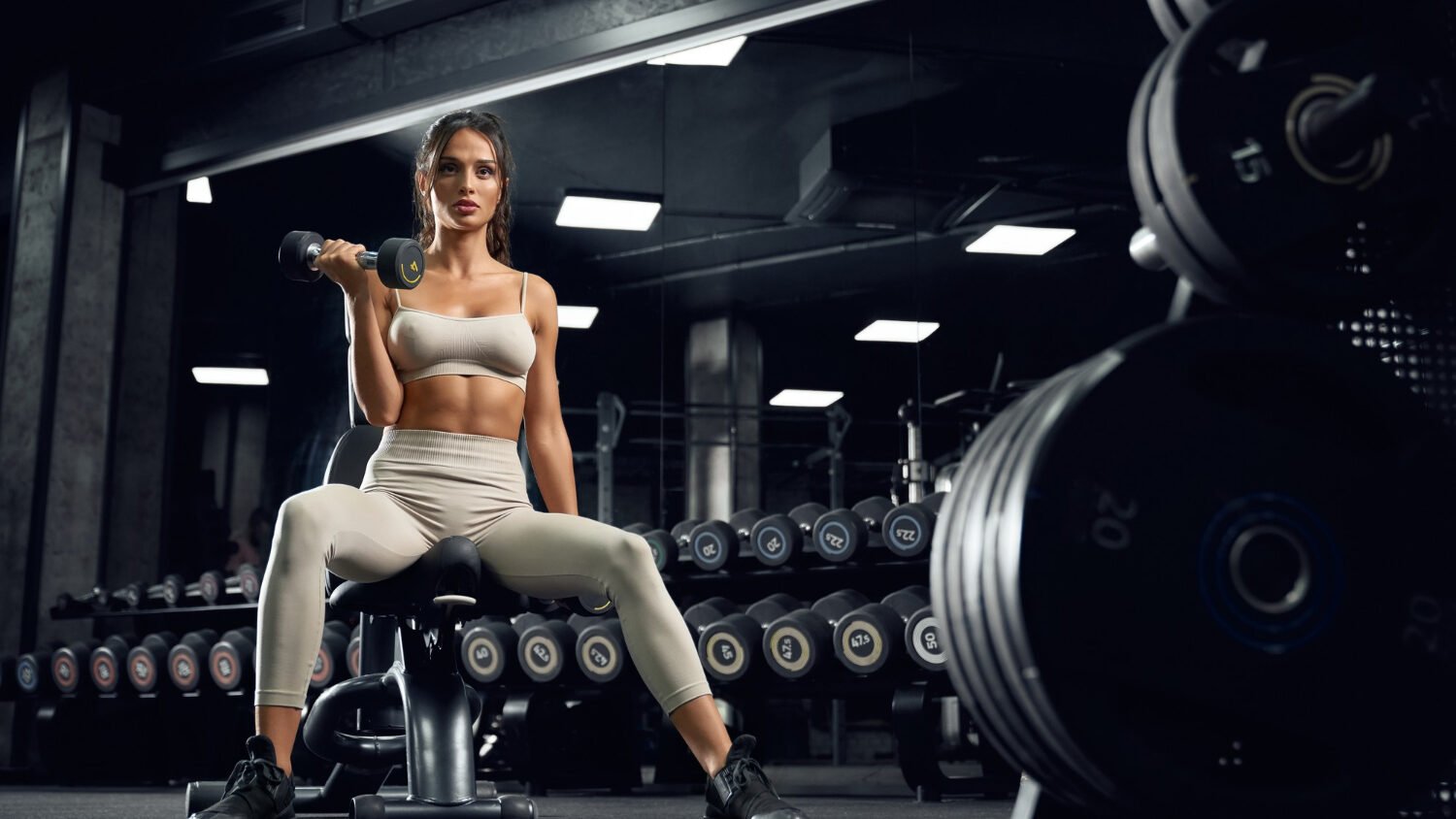
Enhanced Core Stability and Strength, Improved Performance in Other Activities, Better Posture and Reduced Risk of Injury.
Enhanced Core Stability and Strength
Enhance your core stability and strength with these dumbbell exercises to improve balance, reduce injury risk, and support better posture. Strengthening your core muscles is crucial for maintaining stability throughout the body, especially when performing compound exercises like squats and deadlifts.
This enhanced core stability not only helps in resistance training but also improves performance in other activities such as running or playing sports.
Engage in these dumbbell core workouts to build a stronger midsection which can lead to reduced pain and improved form during various workouts. By integrating these exercises regularly into your routine, you can experience the benefits of increased core strength such as better balance, injury protection, improved posture, and reduced low back pain.
Improved Performance in Other Activities
With enhanced core stability and strength, you can expect improved performance in various physical activities. Engaging in dumbbell core exercises helps improve your balance and posture, reducing the risk of injury during other workouts like weightlifting, running, or sports.
A strong core also enhances your overall body control and coordination, allowing you to move with more efficiency and power.
Moreover, as your core becomes stronger through weighted ab exercises, you’ll notice increased ease in performing daily tasks such as bending down to pick up objects or maintaining proper form while sitting or standing for extended periods.
Better Posture and Reduced Risk of Injury
Strong core muscles support the spine and pelvis, contributing to better posture. Improved postural alignment can relieve strain on the back, reducing discomfort and preventing injury during daily activities or exercise.
Engaging in dumbbell core exercises helps build a stable foundation, enhancing overall body mechanics while lowering the risk of strains and other muscular injuries.
Developing a strong core also aids in maintaining balance and stability during movements such as bending, lifting, or twisting. This increased stability mitigates potential falls or accidents by providing greater control over body positioning.
Frequently Asked Questions about Core Exercises
Wondering why core exercises are so important? Core strength is crucial for overall stability and balance, leading to reduced risk of injury during physical activities. Engaging in regular core exercises can also improve posture and provide better support for the spine and pelvis.
You might be curious about which specific muscles are targeted by these workouts, such as the rectus abdominis, diaphragm, and transverse abdominis. Another common question pertains to the variety of movements involved; both dynamic movement exercises like wood chops and anti-movement exercises like planking help build well-rounded core strength.
If you’re looking to amplify your routine with dumbbell core training, stay tuned for valuable tips.
Ready to see these effective dumbbell core exercises in action? Check out our instructional video guide that demonstrates each exercise with proper form and technique. This visual resource will ensure that you perform each movement safely and effectively while targeting your midsection for a stronger, more stable core.
Conclusion and Next Steps for Core Development
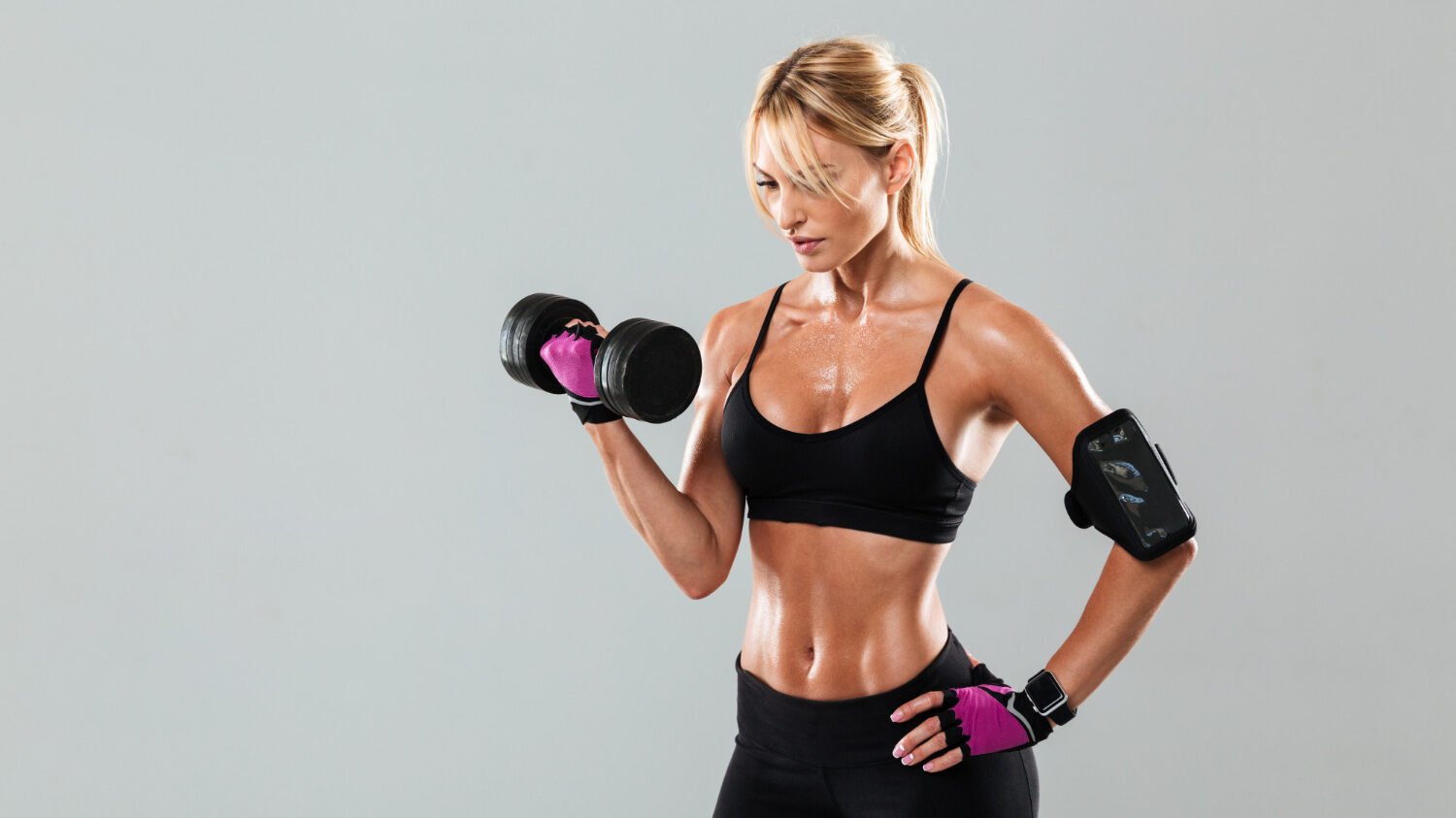
In conclusion, these 10 effective dumbbell core exercises offer a well-rounded approach to strengthening your midsection. Their practicality and efficiency make them easy to incorporate into your routine.
Have you tried adding these exercises into your workout yet? Consider practicing proper form and technique as you start integrating them into your fitness regimen. By consistently performing these exercises, you can significantly improve your core stability and overall strength.
For further guidance, explore videos of these exercises for a visual demonstration that complements the detailed instructions provided in this article. Start challenging yourself today and unleash the potential impact of a stronger midsection!
FAQs
1. What are some of the best dumbbell core exercises?
The best dumbbell core exercises include the reverse lunge with twist, lying overhead reach, and chest fly. These movements target your abs and strengthen your pelvic structure for a solid midsection.
2. Can men use single dumbbell core exercises to get six-pack abs?
Yes, men can perform single dumbbell core exercises like roll-ups and lateral flexions to work on their abdominal muscles and tendinous intersections which may contribute to developing six-pack abs.
3. Are there any dumbbell core exercises that also help with fat loss?
Absolutely! Exercises such as pushups while holding a dumbbell or doing trunk flexion moves can boost strength workouts while aiding fat loss due to their high energy demand.
4. How do I incorporate weights like kettlebells into my core workouts?
You can use a kettlebell instead of a dumbbell in movements like the halo or rotational punches to engage your rotator cuff and obliques more deeply during strength workouts.
5. Is it safe to exercise the lower back with these core workouts if I have lordosis?
Exercises targeting the posterior chain, such as deadlifting or squatting with proper form, should be done carefully if you have lordosis; focus on isometrics initially, then gradually progress under guidance from an expert.
6. Does diet influence my results from doing these abdominal exercises?
Definitely! A healthy diet low in sugary drinks and alcohol paired with regular abdominal exercise will enhance muscle definition around your rib cage better than exercising alone.
Sources referenced in this article

Author
Years ago, the spark of my life’s passion ignited in my mind the moment I stepped into the local gym for the first time. The inaugural bead of perspiration, the initial endeavor, the very first surge of endorphins, and a sense of pride that washed over me post-workout marked the beginning of my deep-seated interest in strength sports, fitness, and sports nutrition. This very curiosity blossomed rapidly into a profound fascination, propelling me to earn a Master’s degree in Physical Education from the Academy of Physical Education in Krakow, followed by a Sports Manager diploma from the Jagiellonian University. My journey of growth led me to gain more specialized qualifications, such as being a certified personal trainer with a focus on sports dietetics, a lifeguard, and an instructor for wellness and corrective gymnastics. Theoretical knowledge paired seamlessly with practical experience, reinforcing my belief that the transformation of individuals under my guidance was also a reflection of my personal growth. This belief holds true even today. Each day, I strive to push the boundaries and explore new realms. These realms gently elevate me to greater heights. The unique combination of passion for my field and the continuous quest for growth fuels my drive to break new ground.





